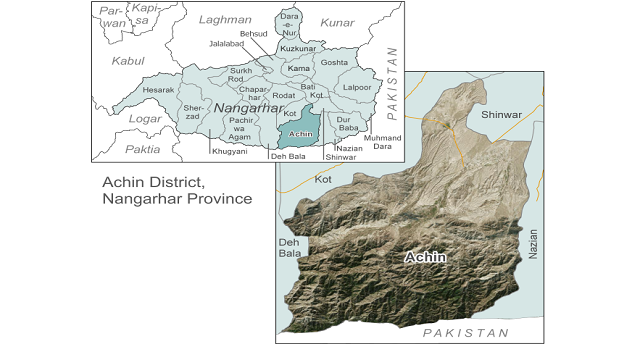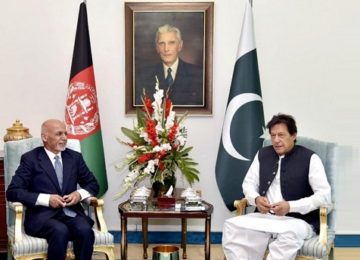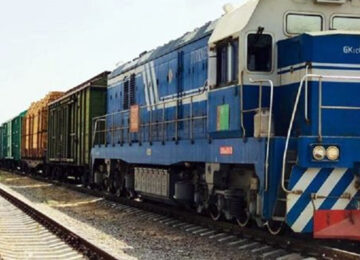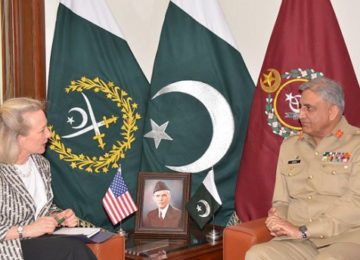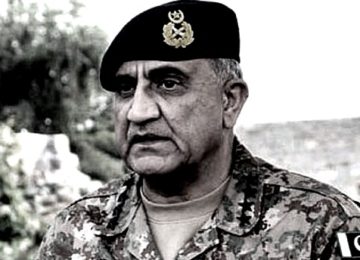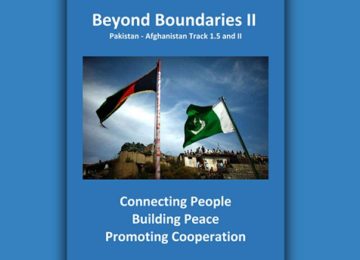February 19, 2019.
It has been almost four years since the Islamic State Khorasan Province (ISKP) captured territory in southern Nangrahar province, where it ruled with extreme brutality, and nearly two years since the United States military and Afghan government forces began concertedly fighting the group there. (The Taleban, too, have fought ISKP sporadically.) The last commander of NATO and US forces, General John Nicholson, vowed then that he intended to defeat ISKP in 2017. It has been driven back, but still holds some territory – and the ‘battle’ goes on, with ISKP mainly now targeting civilians in large-scale, urban, terrorist attacks. In this dispatch, we get an eye-witness account of the fighting in Nangrahar from journalist Andrew Quilty* and juxtapose it with excerpts from an article that appeared in the German media.
Journalists Andrew Quilty, from Australia, and Wolfgang Bauer, from Germany, have both spent time with pro-government forces fighting ISKP, also known as Daesh, in the Mamand valley of Achin district. Quilty was based in a small US special forces base, while Bauer was with a unit of the Afghan National Border Police (ANBP). Their reportage gives insight into the daily life of soldiers, police and local civilians. They discuss air strikes and cooperation between US and Afghan forces and the difficulty of shifting ISKP from territory and from minds. They share one conclusion, that the fight against ISKP will only succeed if the local population come to trust the government and they question the US special forces alliance with one local strongman in particular, a commander of an Afghan Local Police unit named Belal Pacha, whom locals accused of murder and kidnap. After the end of Quilty and Bauer’s reporting trips, Belal was arrested and jailed.
Both journalists have anonymised the names of soldiers and officers.
Andrew Quilty: 2018
With their heads bowed, the 12-man Operational Detachment Alpha (ODA) team gathered around the visiting army chaplain. It was July 2018 and at 7am, as the sun flooded the Mamand Valley in eastern Afghanistan’s Nangrahar Province, it was already sweltering. “…As we impose costs on the enemy,” said the chaplain, “[we] strike fear into their hearts, and deal blows of death from which they will not recover.” The team chuckled with approval at the violence evoked by a holy man, then mounted their vehicles and departed. It was one of the final missions of their six-month deployment to rid the valley, less than ten miles from the border with Pakistan, of fighters from the Islamic State’s Afghanistan branch, the ISKP.
The rise of ISKP
The so-called Islamic State was declared by Iraqi-born Abu Bakr al Baghdadi, in Mosul, Iraq, in June 2014. That same year, militants from Pakistan were welcomed by communities in southern Nangrahar after they had crossed the Durand Line from their redoubts in North Waziristan, one of Pakistan’s Federally Administered Tribal Areas (FATA). They were fleeing Pakistani military operations. By April 2015, those militants were pledging allegiance to the new, self-declared caliph in Iraq.
Prior to this, residents of the Mamand Valley had lived for several years under uncontested Taleban rule – described by some as strict but fair, and by others as merely “less cruel than Daesh.” Taleban control across southern Nangrahar at that time was characterised by a lack of cohesion that made for ineffective shadow governance. ISKP seized on the disorder and forced the Taleban out. ISKP was also able to establish itself in southern Nangrahar because of the disarray and rivalry that ran through government, security and societal networks. As then AAN researcher Borhan Osman wrote, in September 2017. “The weakness of these anti-ISKP forces [government, tribal and Taleban] was coupled with the vitality of two pro-ISKP forces: small militant groups lacking fixed loyalties and the Salafi militants fighting in the ranks of the insurgency.” He continued, “As for local communities, in essence… they have been consistently undermined in recent decades and had become too divided to stand as a bulwark against a new and extremely brutal armed group.”
Locals described the new group as initially ruling benevolently, but then descending into “darkness.” At first, ISKP offered generous salaries to new recruits, sometimes exploiting inter-tribal rivalries and local grievances to strengthen their ranks. Some Taleban groups defected and soon foreign fighters from Central Asia and the Caucasus also began to appear, joining the Pakistanis already in the valley. Within months, however, ISKP changed. Their edicts grew harsher even than those the Taleban had inflicted on Afghans during their time in power (1996 to 2001). The atrocities for which ISKP would quickly become famous – including murder, house burning, forced marriage and closing schools – gave most residents little choice but to leave. In 2015, thousands of families fled Achin, the site of ISKP’s first ‘capital’.
Joint US-Afghan operations against ISKP began across southern Nangrahar in early April 2017. After retaking several villages between Achin district centre and the foot of the Spinghar Mountains, the advance of the US special forces and their Afghan allies, foremost among them, the Afghan National Army Special Forces (ANASF), stalled at the mouth of the Mamand Valley, where ISKP fighters fought from a decades-old cave complex. On April 13 2017, President Trump authorised the use of the largest non-nuclear bomb ever used in combat – the so-called Mother Of All Bombs, shortened to ‘MOAB’. It obliterated the ISKP frontline and allowed special forces into the valley (see AAN reporting here). The US established Observation Post (OP) Bravo, just over a kilometre from the site of the MOAB.
The following month, in May 2017, General John Nicholson, then commander of US forces in Afghanistan, declaredhis intent “to defeat ISIS-K [Islamic State of Iraq and Syria in Khorasan, aka ISKP] in 2017.”
Visiting Blackfish
Captain J – mild-mannered with a scruffy, ginger beard – arrived in the Mamand Valley ten months after Nicholson’s declaration, in March 2018. He was on his first combat tour at the age of 31. His Army Green Beret team, from 2nd Battalion, First Special Forces Group, based out of Tacoma, Washington state, was the third team to occupy OP Bravo. They renamed the base ‘Combat Outpost (COP) Blackfish’, after their team logo, which combines the team’s home-base on America’s Pacific Ocean coast and a marine ‘animal of war’, the killer whale, also known in Washington state as ‘blackfish’.
Blackfish was established in an abandoned Afghan farm compound. A colourfully-painted concrete structure contained the ‘team room’ of the ODA (short for Operational Detachment Alpha, the 12-person team made up of Army Green Berets, and an Airforce Combat Controller and ‘parajumper’). The room was filled with combat equipment and shelves stocked with junk food and energy drinks. There were three small bedrooms and, separated by a flat-pack timber wall, an operations room. This was the only part of the base I was forbidden to enter. A black Islamic State flag was still painted on the wall from the time the militants had occupied it.
Despite being in one of the most hostile districts in the country, at the time, the ODA’s physical defences were meagre. While the corners of Blackfish were manned by conventional soldiers with heavy machine guns, some of the base’s boundaries were secured by nothing more than knee-high concertina-wire. Part of the reason could be heard, almost constantly, in the sky above. SOF’s place, high in the US military hierarchy, means they have almost unparalleled access to air support, including F16 jets, Apache attack helicopters, surveillance and weaponised drones and B1 bombers. On at least one occasion during the two embeds I was invited on, there were no less than five ‘air assets’ circling above Blackfish.
After two previous ODAs and their Afghan National Army Special Forces (ANASF) counterparts had fought their way into Mamand, Captain J’s mission was to continue pushing ISKP back, extending the Afghan government’s reach into Achin’s remote valleys. Two months before the team arrived, a member of the previous ODA, Sergeant 1st Class Mihail Golin had been killed and four others wounded in a firefight. Captain J’s team had six months to extend the ‘government’s reach’ by clearing more territory of ISKP fighters and building checkpoints for the ANSF to man as they progressed. He had never been to Afghanistan before. Yet, in some ways, his mission was less fraught than it might seem at first sight. ISKP has been roundly rejected by Afghans, so the ODA was joining a popular fight. In Achin, the US military presence appeared even to be tolerated by local Taleban, for one good reason, as Captain J explained, “We think people associate us with the absence of ISIS-K.” Furthermore, almost all residents had long since fled Mamand when Captain J arrived in early 2018, so the risk of incurring civilian casualties in their area of operations – another cause of hostility towards US forces – was almost nil. Tolerance, however, was no guarantee of the soldiers’ safety. As he told me another time, Captain J aimed never to travel by road from COP Blackfish—through Achin, Shinwar and Bati Kot Districts—to the nearest major US base at Jalalabad airfield: an ambush, he believed, would be almost inevitable.
In terms of its specific mission, continuing to push ISKP back, Captain J’s ODA was wholly successful. But he liked to look at their mission in far broader terms. “It’s not one or two fighters… hiding up in the mountains, it’s the organisation and ideology as a whole,” he told me. “I kind of took it seriously that 12 of us were asked to hold the line between ISIS and the greater population of Afghanistan.”
For Achin and Mamand Valley, the success of the anti-ISKP mission will partly depend – along with seeing functioning governance established – on building up the Afghan National Army Special Forces [ANASF], who have been close allies of the US special forces mission. Mentoring the Afghan special forces has been central to US’ Freedom’s Sentinel counter-terrorism mission in Afghanistan, as a whole. Not everyone in the team is convinced of the efficacy of this, however.
The ODA’s Master Sergeant, ‘D’, a four-tour Afghanistan veteran who commands respect beyond his rank, does not hide his frustration when the ‘subtleties’ of the mission appear to him to come before killing. During a mission into the Takhto Valley, east of Mamand, in July 2018, Master Sergeant D voiced his suspicions to the author that the Afghan mine clearance team were, as he put it “slow-rolling” their sweep because they did not want to go into the valley. “It was different back in the day, before the whole ‘Afghan-face’ thing,” he said, referring to the strategy of having the Afghan National Security Forces (ANSF) ostensibly leading missions. “Now, it’s a constant struggle just to push the Afghans forward.” Captain J was more sanguine. He also thinks there are deep-rooted problems within the ANSF that lead to a lack of motivation in places like Mamand. “Some of the guys [understand] that it [is] their country and they [need] to fight, other guys [don’t] seem to care.”
The reality may be very different. One de-miner attached to the team, who wore a “FUCK ISIS” patch on his shoulder, told me how hard their job was. “In these narrow valleys and against IS as an enemy, I’m very cautious.” Just a couple of months previously, one of his National Mine Reduction Group (NMRG) team mates had found an IED during a foot patrol with the same ODA. “He was preparing to ‘bip’ it with C4 [an explosive], stepped back a few metres and stepped on another mine. He died instantly. It takes only one mistake to lose the lives of friends.” Moreover, for the de-miners and the Afghan special forces soldiers working alongside the ODA, fighting and de-mining is a daily reality, not a one-off, six-month deployment.
Later, on the mission into Takhto, after hiking six kilometres into the valley, the ODA stopped under a tree. Last time they had come this far they had taken fire and lost an Afghan commando. They rested with two Afghan special forces officers and the mine clearance team as Afghan special forces teams pushed forward, high up on the ridges either side of the valley. There had been the occasional round coming from a ‘hook’ in the valley ahead, so the men were alert, but with two Apache helicopters cruising overhead in slow circuits, I sensed that most of the team considered missions like this one boring, unless they were getting shot at.
Then, without warning, a shot rang out. For seconds, no one could work out where it had come from, but it sounded close. Everyone but an Afghan captain, W, jumped to their feet. He had a trickle of blood running from where a bullet fragment, part of a single round accidentally fired by a de-miner, had ricocheted off a rock and lodged in his temple. The wound was minor, but for Captain W, who had been wounded in combat twice before, it signified more. By the time the ODA’s medic was cleaning the wound back at Blackfish, Captain W had fallen into a gloom emblematic of the low morale that plagues the ANSF. “It’s been eight years. I’m tired,” he said. “I will try to go to Europe.”
Airstrikes
For Captain J, his greatest asset in his Mamand mission is AB, a US air force combat controller attached to the team. AB coordinates all US (the author saw no Afghan air assets and it seems unlikely they would be needed with so much America airpower available), as well as remotely-fired artillery and rockets. At 25, the power he wields with a radio and ATAK – a smartphone-like device used for mapping fighting positions – is in contrast to his surfer image. He typifies the American special forces ‘off-the-leash’ reputation. Unkempt brown hair escaped from the sides of his baseball cap, blending into a beard cultivated with deliberate neglect. He wore cheap knock-off Ray-Ban Wayfarer sunglasses and, on-base, ‘combat Crocs’, plastic sandals.
Combat Controllers like AB, and ‘Joint Terminal Air Controllers’ (JTAC) as their army equivalents are known, are responsible for the targeting and requesting of almost every airstrike that the US military conducts in combat. In 2018, in Afghanistan, the US dropped more munitions (7,362 according to US Air Force Central Command) than in any other year since the war began. The report, published on February 8 2019, states that the strikes were “[i]n support of Operation Freedom’s Sentinel to prevent Afghanistan from becoming a safe haven for ISIS-K, al-Qaeda and other terrorist organizations…” and that “The missions assisted Afghan National Defense and Security Forces operations in applying military pressure in coordination with the international community’s effort to set conditions for a political solution in Afghanistan.”
However, a day spent at Blackfish shows why such figures might be misleading. AB’s JTAC counterpart, Sergeant 1st Class ‘D’, said he had called in more than 100 airstrikes just four months into his deployment, including several during my second embed with the team. None, however, targeted fighters. Instead, the two used their seemingly limitless firepower to keep ISKP fighters off high ground from where they might mount an attack, for “softening up an area before going out there,” as he put it, and even to allow new pilots target-practice in a combat zone.
Even for strikes against non-human targets, however, a request had to make its way through several links in the chain of command for approval. More than once during my time with the ODA, team members expressed frustration at the reluctance of their superiors to hit what they believed were legitimate targets. One Green Beret had spent time in the NATO Special Operations Component Command-Afghanistan Joint Operations Centre, where ground and air missions are overseen at Bagram Airfield, and, without elaborating, said he could understand why airstrikes took so long to approve. Since he was now “back on a team,” though, he could not hide his frustration with delays and denials. “Now,” he said, “I’m like, ‘come on.’”
One evening, the team’s attached mortar platoon fired over 200 rounds into a fold of the valley from where friendly forces had once been shot at, for ‘terrain denial’. On other occasions 500lb bombs were dropped on what I was told were ISKP ‘defensive fighting positions’. Captain J explained it as defence by offence. “We are not,” he said, “directly dropping bombs on bad guys, [but it’s] an effective tool for increasing force protection at a remote site [like COP Blackfish].” After a suspected ISKP fighting position overlooking Blackfish was destroyed in an F16 strike in April 2018, the team’s communications expert picked up radio chatter from near the site: “They’ve destroyed everything, even my clothes.”
Airstrikes do not always go to plan. The first three days of my visit to Blackfish in April 2018 were spent mostly indoors, sheltering from rain, with some killing time playing X-Box. AB, who was planning an escape from the military into venture capitalism, studied a book by Warren Buffet. Everyone took their turn manoeuvring ammunition cans beneath leaks in the roof, emptying them as they filled. They shunned the formalities of military hierarchy, calling one another by nicknames rather than by rank.
The low, heavy clouds had mostly cleared by late afternoon on my third day. The air was electric blue, and unseasonably frigid. In the ODA’s operation’s room, the team’s communications expert picked up a radio conversation and triangulated the source to a mountain the team had dubbed ‘Pandora’, about two miles away. Pilots in Apaches soon spotted footprints in the snow, then three figures lying prone beneath the canopy.
On the roof of Blackfish, AB, the Combat Controller, spoke with the pilots via radio. “I don’t think they’re sun-baking,” he said, scanning the ridge through a spotting scope. In the operations room, Captain J began negotiations with his superiors via radio for authority to strike. The helicopter pilots needed to refuel and turned back for Jalalabad Airfield. AB turned to Captain J, who had climbed the stairs to the roof. “We’ve got a B1, 45 minutes out,” he said, referring to a supersonic, heavy-bombing aircraft. As the colour faded from the landscape, a thick, fuzzy cloud began floating down the mountains toward where the three figures lay. Within 15 minutes it had enveloped the ridge. AB, now alone on the roof, his face illuminated by the screen of his ATAK, radioed to call the B1 crew off. The Apaches returned, but were blind above the cloud. To the night falling around him, and me, AB thought out loud: “All the might of the US military; brought down by a cloud.”
Relations with local powerbrokers
Equally vital to the ODA’s mission were its relationships with local power-brokers. The secretary of the Achin District Council, Mohammad Ayaz, explained how fraught these can be. “The problems occur,” he told this author, “when [Afghan] Local Police commanders take control of villages to which they don’t belong.” One such commander, Belal Pacha, originally from Kunar, defected from the Taleban to the government in 2015 but, the author was told, retains strong connections with Taleban in the area. His reputation for extortion and murder provoked hundreds of men to protest against his allegedabuses in September 2018, in Momand Dara district. A suicide bomber infiltrated the protesters, killing 70 and wounding as many as 200. Pacha’s reputation was well-known to the ODA, but they relied on his cooperation to secure a nearby area. This pattern, of the US military relying on abusive figures for capturing or holding territory, is a familiar one; from 2001 onwards, it has been a symptom of the short US deployment cycle, where expediency is prioritised over long-term consequences. Captain J told me, “We knew [Pacha] was a bad dude, so we always kept our distance, but he had a lot of contacts in the area and we needed his influence.”
Belal Pacha and two of his brothers were arrested, tried in court in Jalalabad and sentenced to six years in prison soon after the demonstration, but it remains to be seen whether the problems surrounding rogue ALP units and local militias, will be dealt with by the time the Americans hand over to local forces.
Belal Pacha was the sort of person who helped ferment the discord that enabled ISKP to roll into Achin in the first place, in 2015. That he and others like him have been recent US special forces allies does not bode well. Most people from Achin I spoke to believe that once the Americans leave the Mamand Valley, unless the government has the support of the local population – and that means genuine and widespread support, not just the support of a few strongmen – it will not be able to hold the area against the Taleban or ISKP for long.
Looking ahead
By July 2018, General Nicholson had wound back his early optimism but vowed to continue the mission until it was complete. “ISIS has proven to have a degree of resilience in southern Nangrahar,” he told me. “They’re tough fighters and they’ll be steadily reduced and we’re going to continue the fight until it’s complete.”
In Achin the following week, residents were slowly trickling back into the Mamand and Takhto Valleys. “The highlight mission at the end… was seeing [Takhto] one last time,” Captain J told me via email from Blackfish shortly before he finished his deployment in September. “About 40 to 50 civilians were roaming around [in an area they had only recently cleared], collecting wheat up and going through abandoned houses. It is nice to see that after [six] months of work, a small valley like that could be given back to the Afghan population.”
At the start of their mission, aside from the fighters still lurking among the homes, Mamand Valley appeared lifeless. By its end, from Blackfish at night, five faint lights could be seen twinkling against the dark.
Outside Captain J’s area of operations, however, the fight against ISKP is less convincing. After pushing fighters back in Achin, US special forces teams did the same in neighbouring Kot District. With ISKP on the run, US Army Green Berets handed their base there over to the Afghan National Army and pursued the fighters further west into Deh Bala, where the militants had established a new de-facto capital, five kilometres southwest of the district centre, in Gargari. The Green Berets built another base, Camp Blackbeard (named after a coffee company run by special forces veterans), on a flat, dusty hilltop near the district centre in June 2018. From there, according to a spokesperson for the US military in Afghanistan, US and Afghan special forces killed 167 ISKP fighters and destroyed caves and weapons caches in a five-day-operation to retake Gargari in June 2018. Surviving ISKP fighters then re-grouped in the caves of Tora Bora, in Pachieragam District, where Osama bin Laden once hid out. There, they remain.
As of January 2019, according to the latest quarterly report from the US Special Inspector General for SIGAR Afghanistan Reconstruction (SIGAR), published on 30 January 2019, Achin is now ‘under government influence’. (2) Here, it remains ISKP, not the Taleban, which is still the second most important player (after the government). Interviewees for a forthcoming AAN dispatch on Achin (part of a series on service deliveries in insurgency-influenced areas – the introduction can be read here), also confirmed that ISKP is still not yet gone from the district. It continues to operate in mountainous areas of the Spinghhar range, including at least some parts of the Mamand, Pekha and Bandar valleys. Interviewees told AAN ISKP is still running its own prison and court systems in parts of the Mamand valley
We asked Resolute Support for an update on where they thought the fight with ISKP now was. In a statement, they said, “In terms of Mohmand, Takhto and Baghdara Valley, we’re not providing detailed operational updates to the media.” The statement said that Resolute Support is continuously build[ing] understanding” of the threat posed by ISKP embodied and “move to and operate from locations where we can achieve effects to disrupt and destroy their capabilities… using targeted operations and enabling capable local security partners.”
ISKP has proved a difficult enemy to dislodge, mainly for reasons of geography, as Borhan Osman, now the International Crisis Group’s head researcher for Afghanistan, said to this author, “With a vast recruitment pool on both sides of the border, it’s hard to defeat [them] militarily without addressing the reasons for the emergence of ISKP in the first place… You can’t just kill them to death.”
ISKP’s territorial control in eastern Afghanistan, has shrunk markedly since the Afghan/US campaign against it began in 2017. Yet, the group’s ability to hit its enemies hard has not abated. The vast majority of those enemies are now Afghan civilians and the toll ISKP has wreaked on them has been devastating. When anti-ISKP operations began in April 2017, the militants began attacking ‘soft’ targets; schools and health clinics in Nangrahar, and Afghan Shia Muslims, mainly ethnic Hazaras, in Kabul and elsewhere (see some of AAN reporting here, here and here). In less than two years, ISKP has claimed responsibility for more than 50 separate bombings or complex attacks that have claimed nearly 900, mainly civilian, lives.
***
Wolfgang Bauer, November 2017 and February 2018
Wolfgang Bauer, a German journalist with the Hamburg weekly, Die Zeit, provides another perspective on the US and Afghan special forces’ fight against ISKP in Achin district. He was embedded with a 14-strong Afghan National Border Police (ANBP) unit posted on a hill overlooking the village of Abdulkhel. All the policemen were from outside Nangrahar. Bauer also had a view of the US special forces’ base Andrew Quilty visited, which is located on a mountain ridge. Bauer’s original German text can be read here. What follows is a summary made by AAN senior analyst, Thomas Ruttig.
Abdulkhel village, which was under Taleban control between 2012 and 2015, then ISKP after they pushed the Taleban out. Pro-government forces (unspecified in original text) took back half of the village between 2015 and February 2018. Abdulkhel is divided by a river that is dry for part of the year and today, Abdulkhel’s river divides the government and the ISKP-controlled sectors of the village. Since pro-government forces took half of Abdulkhel, ISKP fighters have twice overran the government post, each time killing almost all the policemen present, 22 in all. Their severed heads were displayed for weeks dangling from a mobile phone antenna on a neighbouring hill.
Yet it was Taleban brutalities, a local malek (village chief) told Bauer, had paved the way for the ISKP’s 2015 takeover. Quickly-rotating Taleban commanders had villagers killed who worked for the government, kidnapped businessmen and killed those who did not pay ransom. They killed mullahs who criticised their behaviour. As a result, the villagers were initially happy when the ISKP fighters arrived. But then, they discovered, ISKP did not “respect local traditions.” They banned women from shopping in the bazaar, told men to grow their hair long and suppressed poppy growing. Both Taleban and ISKP exploited family feuds to get local support.
The Taleban, when in control, had also initially stopped the construction of a madrasa that had been privately initiated by a local religious scholar and financed with World Bank money through the government (scheme not specified in original text). The provincial head of education department, however, sent a delegation to meet Taleban leaders in Pakistan who finally agreed to it. The madrasa began teaching, not only religious, but also ‘modern’ subjects. When ISKP took over, it closed the madrasa again. As the madrasa is on the government-controlled side of the river, it had re-opened, and even children from the ISKP side attend. However, the madrasa’s head teacher told Bauer, they have adapted IS ways of live and thinking, and speak even against the mullahs on the government side.
The Afghan Local Police unit Bauer visited was tasked with intercepting ISKP fighters driven out of the nearby Mamand valley. It was a 70-strong unit and lead by the notorious commander, Belal Pacha. It cooperated with, and was supported by the newly-deployed US special forces. Belal, Bauer mentions, had been part of a ‘Taleban splinter group’ linked with the Pakistani Taleban umbrella, the TTP (which also includes Afghans), until 2015 when he changed sides and was now paid by the Americans.
The US forces, Bauer wrote, “monitor phone traffic in the day and hunt the ISKP at night.” He also described their plentiful air support. On a daily basis, B-52s, other jets and helicopters circled over the village. He described how one afternoon, a B-52 fired on the houses on the other side of the river. “Children run around in panic between the mud houses. Then, dust starts to cover the village. Once more it fires higher into the hillside, where the pastures are where the children graze their village’s goats.”
“We do not consider them civilians,” the Afghan border police commander told Bauer about those families.
Bauer is told the story of two boys killed in a similar incident the day after he left, in November 2017. He contacted the US military, he said, but did not receive any reply by the time of publication.
Belal’s fighters, who had pushed out ISKP from one half of the village, were ‘taxing’ local traffic and businesses at their checkpost at the road leading into Abdulkhel, according to the ABP unit commander and a local firewood trader. Altogether, the trader said, there are six checkposts on the way to the next bigger bazaar where he was being forced to pay ‘tax’. Some of the checkpoints were controlled by the Afghan National Police (in the district centre) and others by other ALP commanders, among them some loyal to Nangrahar strongman and MP, Haji Zaher. Belal sometimes accused traders of working for ISKP and confiscated all their wood. He would then take it to the bazaar on a lorry he had also stolen. Belal, the trader said, “is the worst” and that, because of him, he now hated “the government and the IS.”
Belal was also playing the role of the local judge, Bauer observed, as there was no other judicial authority. He publicly took money from the parties. The local maleks and mullahs accused him of killing villagers without trial, of kidnapping businessmen and maintaining a private jail and of torture. They complained to the provincial police chief and asked for Belal’s arrest – by then, without result. They also accused provincial officials of being paid by Belal. Belal was finally arrested in October and, with two brothers, jailed.
Belal was also said to have shot people when he was high on drugs. He kept a disabled boy, whom Bauer thought was then 12 years old as a ‘dancing boy’ (ie an underage youth kept for sex). The ABP commander told Bauer, Belal was the “scourge of this valley, worse than the Taleban and IS put together.”
Bauer returned to Abdulkhel once more in February 2018, after a cold, but almost snowless winter. 60 people, he was told, had died from the cold, whooping cough and from ‘poverty’. People did not dare to go to the mountains where they used to collect firewood, anymore as these areas were controlled by ISKP. The local clinic had no medication anymore. And as the local opium factories had been closed, people were deprived of cash income. Hundreds, Bauer is told, had been living from the drug economy.
Bauer concluded, that the Americans have established the countrywide system of the [Afghan] Local Police. The US military believes that they cannot stop the IS and Taleban’s advance without men like Belal. In Abdulkhel they have created a monster, though, he said, and: For most people in the village, this monster is the government in Kabul, that put Belal in place.
By Special Arrangement with AAN.
Disclaimer: Views expressed on this blog are not necessarily endorsed or supported by the Center for Research and Security Studies, Islamabad.



